As an Amazon Associate I earn from qualifying purchases.
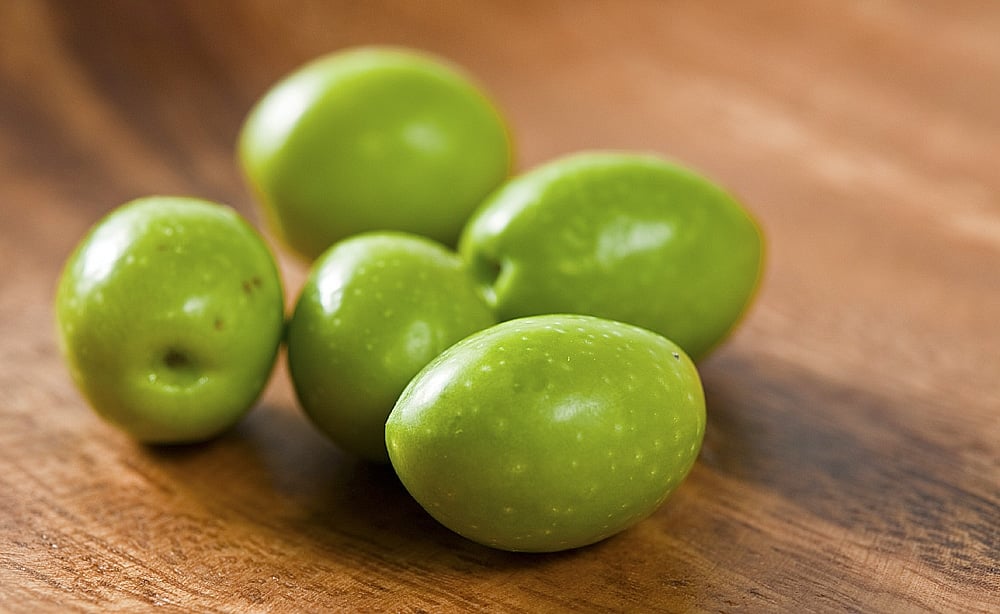
Lye. Isn’t that the stuff the Mafia uses to dissolve the bodies of those who’d made an unfortunate choice to use another waste disposal or vending machine company? Isn’t it drain cleaner, a deadly poison? So how on God’s Green Acre can lye be useful in the kitchen?
Relax. I am here to tell you that lye can be your friend, especially when it comes to curing green olives. Good lye cured olives, I have discovered, are uniquely smooth and luscious in a way that brine or water-cured olives can never be. Done right, they can be <gasp!> even better than a brine-cured olive or an oil-cured olive. Seriously.
Let me start by admitting that I was as terrified about using drain cleaner to cure olives as you are. Intellectually I knew it would work, and knew I’d eaten lye cured olives before, as have most of us: They are those nasty black canned things also known as Lindsay olives. That knowledge, however, did not bolster my desire to do any lye curing anytime soon.
Then I did some research. I’d seen all sorts of references to how the lye cure — actually a cure in water that had percolated through wood ashes, which are a source of lye — being used “since Roman times.”
Many hours of searching later, I found that the Roman agricultural writer Rutilius Taurus Aemilianus Palladius is the source of this, in his De Re Rustica, written in the 300s.
“Mix together a setier of passum, two handfuls of well-sifted cinders, a trickle of old wine and some cypress leaves. Pile all the olives in this mixture, saturate them with this paste in garnishing them with several layers, until you see it reach the edges of the containers.”
Passum is freshly extracted grape juice, so the lye in the ash-water interacting with this would make an interesting brew. There would be so much sugar going on in there that you could get both a lye cure and fermentation going at the same time. Freaky.
Since then the Spanish have been masters of lye cured olives. Most Spanish table olives are cured at least in part with lye, but their process is far different than that used in to make the hideous Lindsay olive. I am modifying a method I found in an agricultural book written in 1817.
Incidentally, other popular modern olives that use a lye cure include the French lucques, Italian cerignola and Spanish manzanilla.
First thing you need to know about lye cured olives is that you must use fresh green olives. Not black ones, not half-ripe ones. The lye process softens the meat of the olive, so you want it as firm as possible.
When you are picking your olives, watch out for olive fly. The larva of this nasty little bug burrows into an olive and eats it from within. Thankfully infested olives are easy to spot: They will ripen faster than healthy olives, and there is a tell-tale scar on the olive that looks like this:
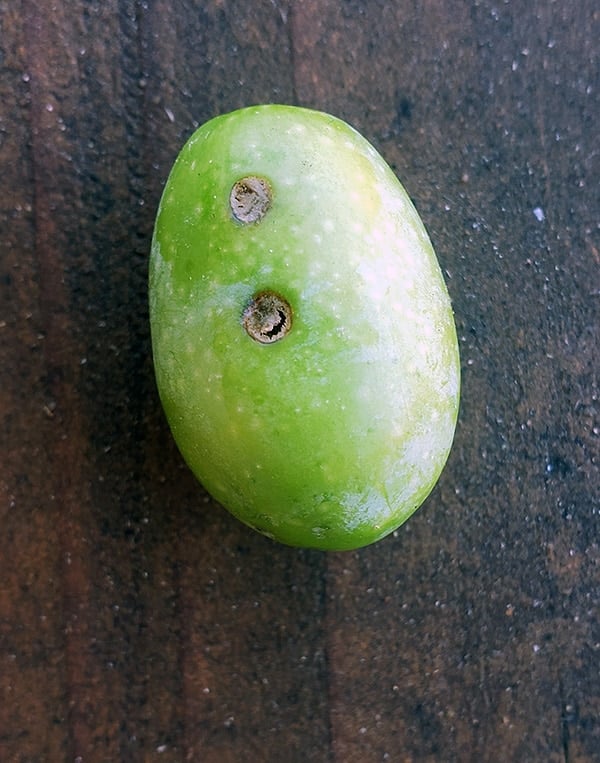
Toss that olive. While the worm is not poisonous, I prefer my olives sans extra protein, thank you.
What sort of lye do you use? The traditional brand to use is the classic Red Devil Lye, which is an old brand of drain cleaner. Drano used to be this way, but apparently has additives now. Don’t use it.
I now buy food grade lye because, well, it’s easy to get on Amazon, and I also like making pretzels at home, too, and they use lye to get that signature crust.
Isn’t lye a deadly poison? Sorta. Sodium hydroxide is one of the nastiest bases we know of; a base is the opposite of an acid. On the PH scale, distilled water is the median, at 7. Your stomach acid’s PH is about 1 1/2 — enough to burn a hole through a rug. Lye’s PH is 13.
Bottom line: Raw, pure lye will burn the hell out of you, but it is not a systemic poison. That means that even if you eat an olive that still has a lot of lye in it — as I did — all you will taste is a nasty soapy flavor. If you eat a bunch of them, the alkaline PH in the olives will counteract your stomach acid and it might give you indigestion. That’s all, and that’s a worst-case scenario.
That said, you need to be careful at that one moment you are moving raw, pure lye from the container to the crock you are curing into.
LYE CURED OLIVES STEP BY STEP
Follow these instructions and you will be fine:
- Wear glasses if you have them. Wear long sleeves and pants and closed shoes. You will probably not get lye on you, but better to be safe.
- Pour 1 gallon of cold — not tepid, not hot, but cold — water into a stoneware crock, a glass container, a stainless steel pot, or a food-grade plastic pail. Under no circumstances should you use aluminum, which will react with the lye and make your olives poisonous.
- Using a measuring device that is not aluminum, add 3 tablespoons of lye to the water. Always add lye to water, not water to lye. A splash of unmixed lye can burn you. Stir well with a wooden spoon.
You’re done. You use cold water because the reaction between lye and water generates heat, and the hotter the lye-water solution, the softer the olives will become. Now that it is mixed, the lye solution can’t hurt you, so go ahead and add your olives.
Stir them in with that wooden spoon and put something over all the olives so they do not float. This is vital. Olives exposed to air while curing turn black. Don’t worry, they will absorb the water and sink in a few hours, but to start you need to submerge them.
Let this sit at room temperature for 12 hours. The alkaline solution will be seeping into the olives, breaking the bonds of the bitter oleuropein molecules, which then exit the olive and go into the water. After 12 hours, pour off the solution into the sink. It should be pretty dark in color.
Quickly resubmerge your olives in cold water. You want to minimize the exposure to air. You now have cured olives.
I know, I know, a lot of recipes say to repeat the lye process another time — sometimes three more times — but that will destroy a lot of flavor; there are a ton of water-soluble flavor compounds in an olive that the lye solution washes away. Trust me. Your olives, unless they are gigantic, will not be overly bitter even after just a light, 12-hour lye soak.
Now you need to cleanse your lye cured olives. They will have a fair bit of lye solution within them now. Keep changing the water 2 to 4 times a day for 3 to 6 days, depending on the size of the olives. After 2 days, taste one: It should be a little soapy, but not too bitter. It’ll be bland, and a little soft. Once the water runs clear you should lose that soapy taste.
Time to brine. If you have large olives, make a brine of 3/4 cup salt to 1 gallon of water. And use good salt if you can. You will taste the difference. Kosher salt is OK, but ideally use a quality salt like Trapani, which is from Sicily. It’s not that expensive, but it is worlds better than regular salt.
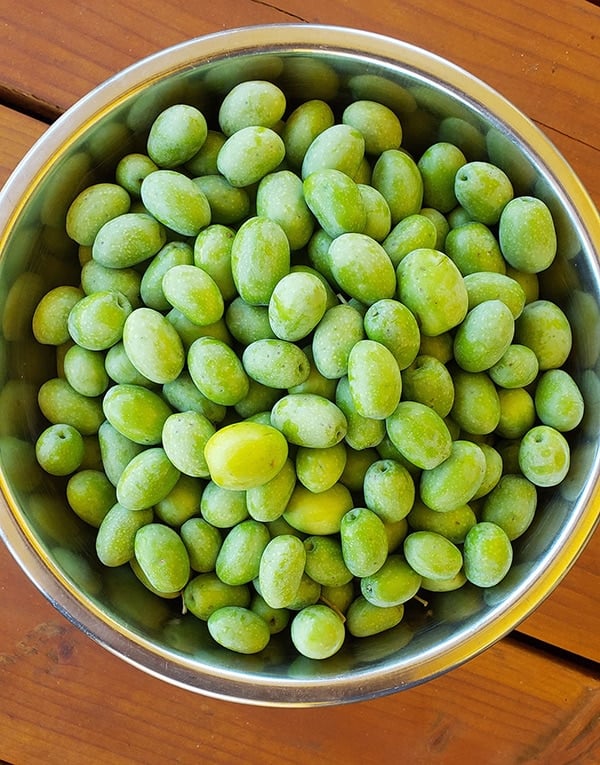
Let the olives brine in this for 1 week. Keep them submerged, or you will get darkening. After a while they will sink. After 1 week, pour off the brine and make a new one, only this time, use 1 cup of salt per gallon.
Now you can play. The traditional Spanish cure would add some vinegar to the mix, as well as bay leaf and other spices. I’ve played with adding a touch of smoked salt, chiles, black pepper, coriander, mustard seed, garlic — think Mediterranean flavors.
But before you do this, taste your freshly brined olives. It will be a revelation. They will remain beautifully green, unlike brined olives. Salty, olive-y and very, very buttery. This is the Lay’s Potato Chips of olives. I dare you to eat just one.




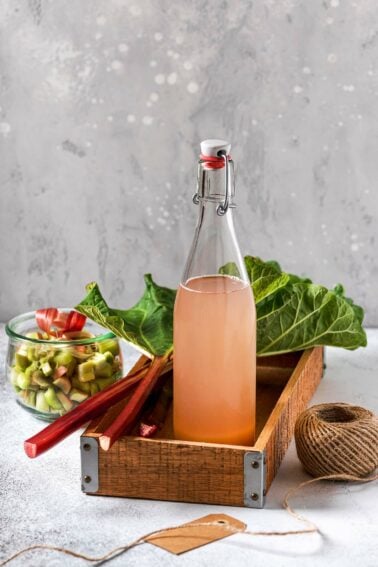

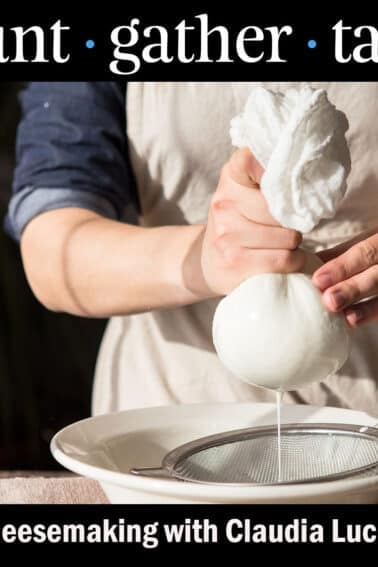

Hi! Awesome recipe. I’m comparing your method to the one listed in UCANR (https://anrcatalog.ucanr.edu/pdf/8267.pdf) and they recommend using a lactic acid starter culture to encourage fermentation. Have you ever tried that?
Jake: I have not. But I bet it would work.
So grateful for this recipe! How do I store the olives after they are done? Do I put them in mason jars? Leave them in a bucket? Do I water bah them in jars! Thanks for sharing this recipe.
Did you pit the olive before the start of the process.
Eddie: no.
I don’t have a ton of fridge space, and I and ready for the second brine solution, thinking about my final storage solution. Has anyone used food saver bags for their olives?
Hi Hank. I followed the olive curing with lye recipe exactly, and the texture of the olives is perfect, but we are finding the final product way too salty. Can I simply dump out half of the flavored brine in each jar and add normal water to dilute the saltiness? Or do we need to keep it that salty so the olives don’t go off? They’ve been sitting g in this final too-salty brine for one week. (I used the fancy salt you recommended) Thanks!
Diane: Set them on a new brine that is half the strength. It will leach out some of the salt.
I don’t think you want leaking salt brine out of the bags. use either plastic food storage jars or mason jars or glass jars in the right size for your place to fit them into the nooks and crannies of the fridge. I always use glass for the final storage. salt is pretty corrosive.
I leave them in the salty brine in order to keep them safe for storage and then I changed the water before serving them. to either no salt to try to get them to desalt some or to a partial salt bath. either way, I only go down from the strong salt close to wanting to serve some of them
I soaked my green olives in lye (2 solutions, the first one stronger) for a total of about 36 hours.
I rinsed the olives in water, changing twice a day, for 8 days.
Then brined for about 18 days.
The olives still had a funny, chemical-like taste. Not bitter, but not good. I assume I didn’t get
the lye all the way out.
Hank, any thoughts?
Patrick: Yes, if the chemical taste is still there, you didn’t get the lye completely out.
How much salt do you use if you have small olives?
I have a question on lye. The lye solution never got warm let alone hot. I have well water and just used that. I got both a food grade caustic soda and a 100% lye from the plumbing department and had no heat with either. One lye bath doesn’t quite do it. Is it my water, my lye or my New England climate where winter starts in October?
Thank you very much.
Tomorrow I am going to do so.
From experience,
After taking out the bitterness, By:
7 times changing water evry 24 hours
or, making slice or hammering the olives and 4 days changing water
or using the Sodium Hydroxide
in a bucket 5 galon
in 5 layers
In between : slices of LEMON GARLIC AND HOT PEPPER.
For 1-4 months.
THAN EAT THEM.
David
Hi Hank,
I have brined olives before and never had this issue. After 2 12 hour soaks in lye, and 3 days of changing water 3 times per day, the olive skins appear to be peeling. They are also a bit softer than before. Any thoughts?
Thanks!
Hi Hank,
As I have never done this before, I followed your directions, I lye cured my olives. After about 24 hours or so, inspecting the olives it appeared the olive meat, to the pit, had change from white to a nice shade of green. As directed, I filled the food safe container with water sealed it and flushed it out several times each day until the 6th day when the water ran clear. So then I brined with salt, of type you recommended (thank God for Amazon). With the lids, I sterilized my glasses bottles, and put the olives with warmed well disloved brine water. I experimented with different types of additives: garlic or garlic with bay leaves, or Garlic, Bay Leaves and white wine vinegar or just nothing but the brined water. Then resterilizes the now olive filled glass jars. The results is the my olives went from a bright green upon picking to now more of a deeper darker green.
So my questions are:
1) How do I keep my olives more brighter green?
2) When can I started tasting the olives.?
3) Are my olives safe to eat? Back story; My front yard olive tree, produced 4 gallons of nice green olives. First time in seven years. The olives looked healthy, a few had a fruit fly type of hole but only one or 2. But the olives had a slight very dimpling, sort of like pores on skin, but no holes. During the lye process they became more pronounced. Then upon brining, maybe it was the darker shade of green, but they became less pronounced.
4) What could have done different?
Thank you Hank for providing a path forward to all of us that like to explore new areas of preserving.
Greg
Greg: Exposure to heat and air will darken the olives. But they should be fine to eat. You can eat a lye cured olive after a week or two, as opposed to the brine cured, which takes months. The dimpling is a thing, as are those larvae. I generally lye cure only pristine olives I pick in late September to mid-October. After that, they’ve ripened too much.
After the second brine, do you store them in water or brine in the refig?
Thomas: Typically in the brine itself.
I’m doing my first cure ever, and have followed the recipe. We did a 12 hour lye, and are day 2 of the rinse step. We have 3 buckets, 2 of them converted partially to that gray-green olive color. However the a mottled in color, very uneven and many olives and kind of a tiger spotting of dark and light is that normal?
The other issue is the 3rd bucket is still very lime green, and also mottled. But the color is significantly brighter than the other two.
Should I lye these again, what do you recommend?
I tasted an olive, it was still bitter and the meat of the olive at the center seemed more raw than the outer part.
Thanks for the help
Hi – I am using jars to keep the olives on a brine, should I keep it on the refrigerator … here is my question
Cover the jars or keep it in cover on fridge ?
Wella: I’d put them in the fridge, covered.
Thank you so much!!
Hi, I am at the step where I add the spices. I added coriander, black pepper, garlic, rosemary, bay leaf and Juniper berries. It doesn’t talk about how long to let it sit with the flavors before enjoying. Also, should I keep it in a dark place on the counter?
Jeanette: I’d go with a dark place, and you can keep the spices in there forever.
my green olives have turned a dark Grey color during the rinsing process. what causes this? I kept them covered in water.
Should I use coarse or fine Trapani salt? Thanks!
Nicole: I used coarse.
Thanks Hank. Another question for you – I’ve been soaking/rinsing my olives for 5 days, and the water is still not running clear, but many of the olives are losing their bright green color, and turning, well, olive green (they’ve been submerged in water the whole time). Is that an issue? I tasted one and it tasted bland, but no longer soapy. Perhaps I can start brining them now?
Nicole: Yep, I’d start brining them now.
I made mine exactly as written in the recipe but they are still bitter. Is there a way to save them? Should I repeat the lye and start over? Keep brining longer with a fresh brine? Thanks!
Beth: I’d repeat the lye process. That can do the trick. Sometimes this happens with larger olives.
Oops! I didn’t read the comments until now, and I just set my olives for the second week of brine! I added spices and garlic and put them in jars with the 1c salt to 1gal water. Should I take them out, rinse the garlic, and rebrine? Let them be for a week then do the final brine with spices?